Birth of a chimpanzee

Our Central African chimpanzee troop has welcomed a new member! The 3-week-old newborn, who is Tibe’s second infant, is thriving. The 26-year-old mother had first given birth to a male in 2020.
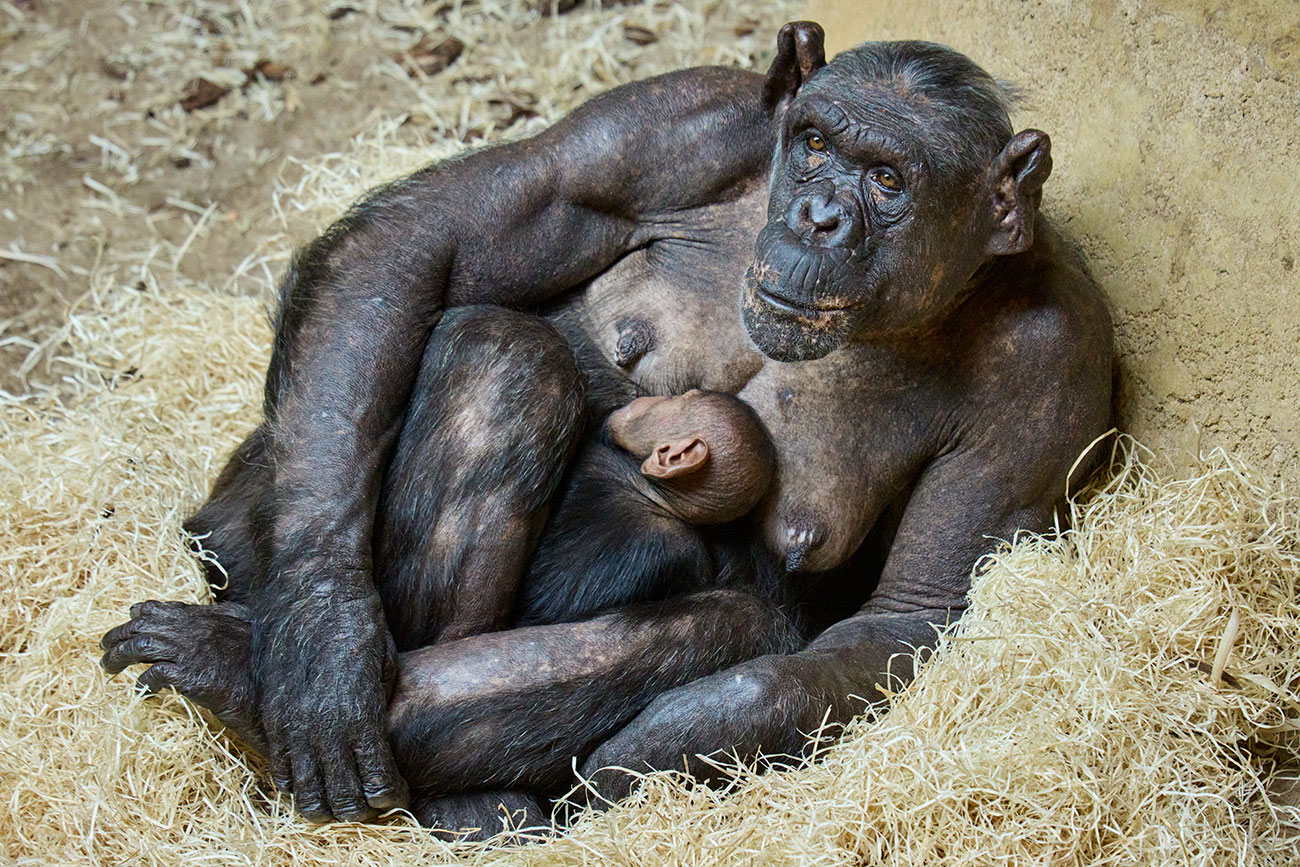
This new addition to the troop is good news for the conservation of Central African chimpanzees and the European Breeding Program which currently numbers only 37 individuals spread across a dozen institutions and has recorded only one birth—ours—in the past 12 months.
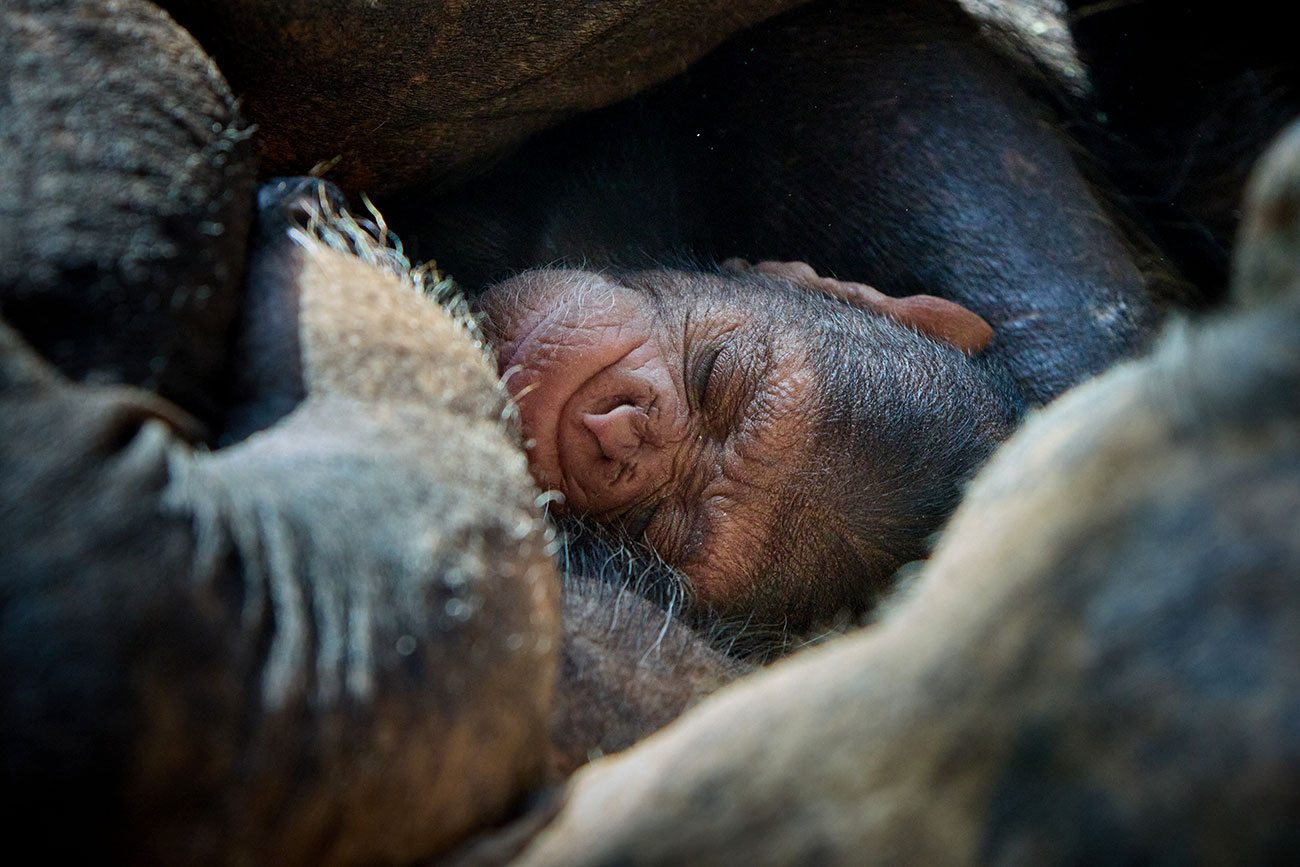
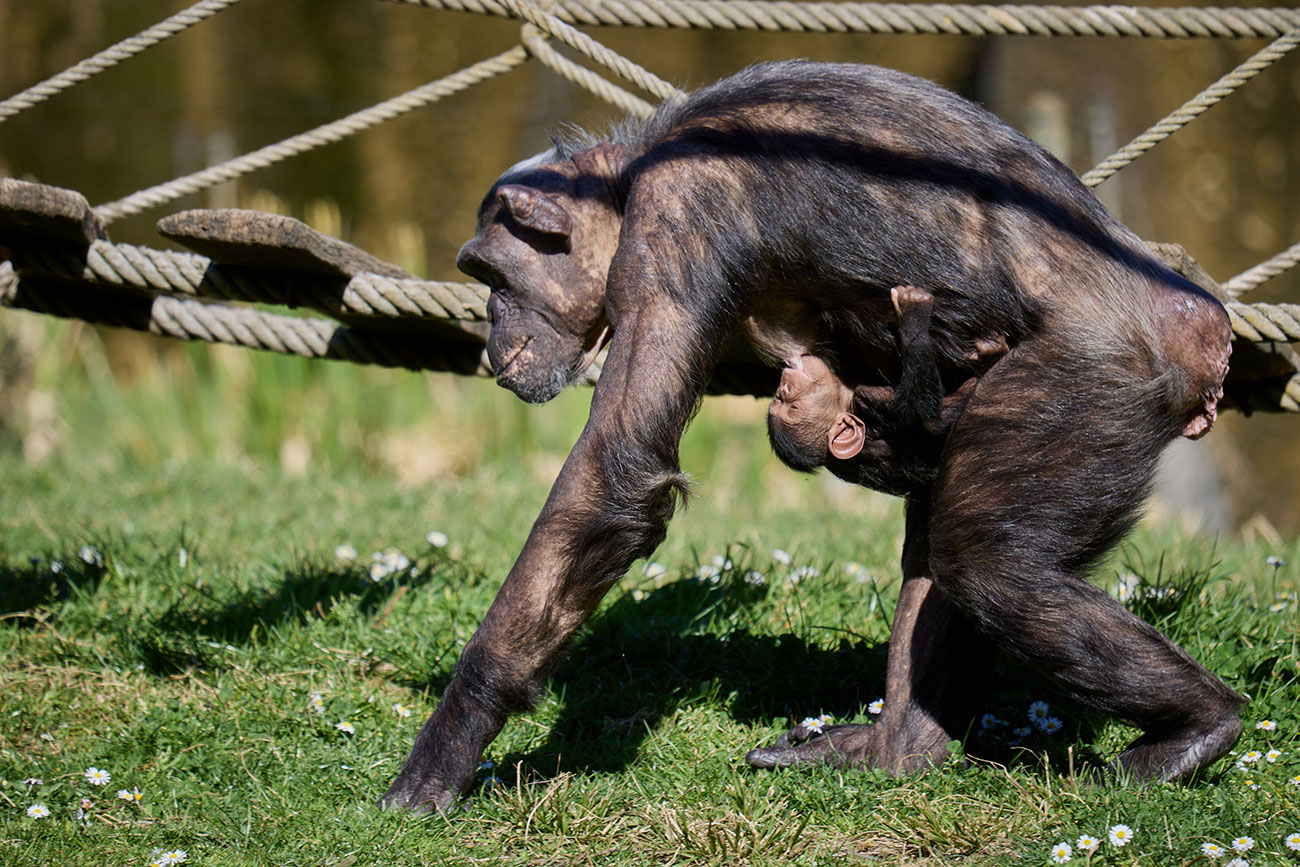
The infant being permanently huddled on its mother's belly since birth, it has not yet been possible to determine its sex with certainty. We will therefore need to wait a little longer before being able to confirm whether it is a male or a female! This birth brings the number of individuals in this group to 10. It may seem like a large troop, but it is much smaller than many of the chimpanzee communities observed in the wild which can include several dozen members evolving within a complex and changing hierarchy depending on the alliances developed by each troop member.
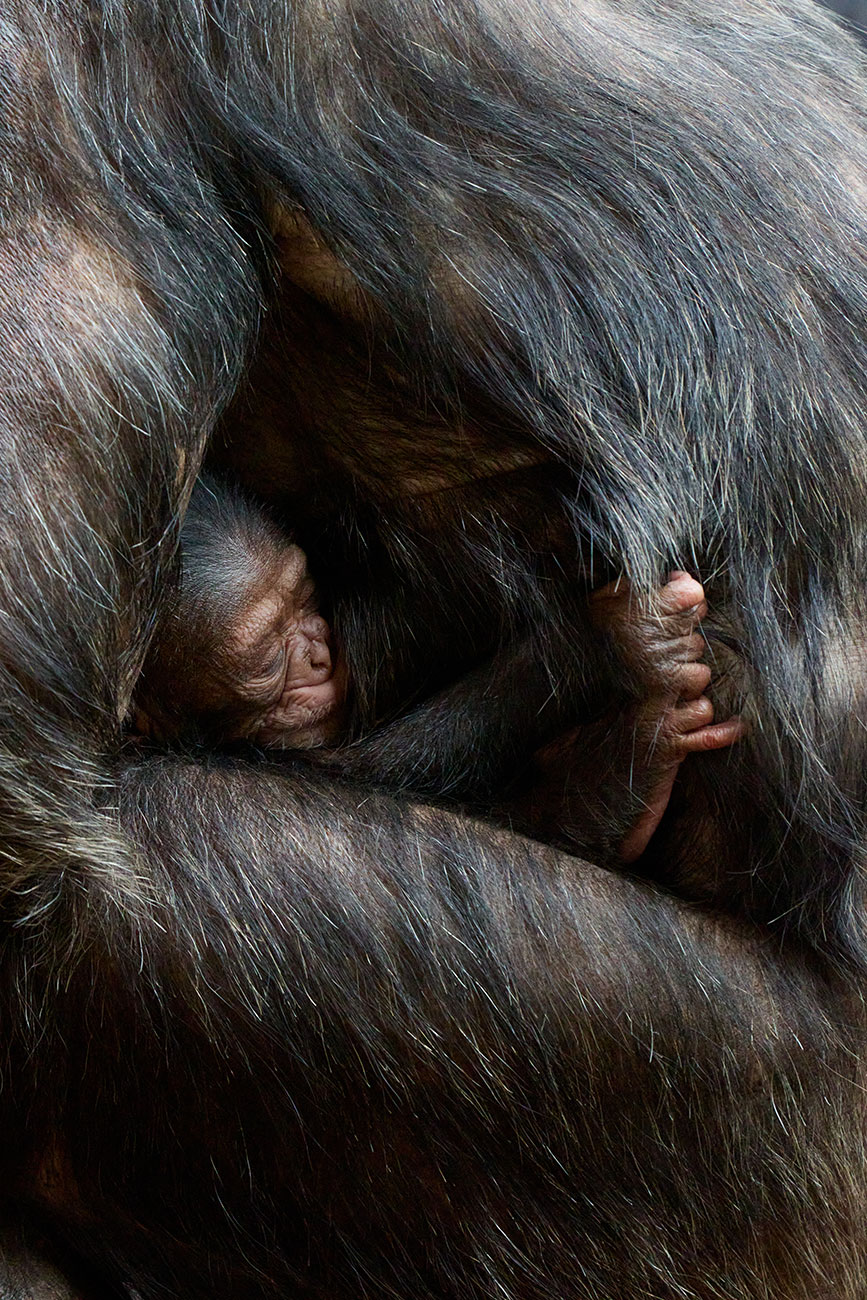
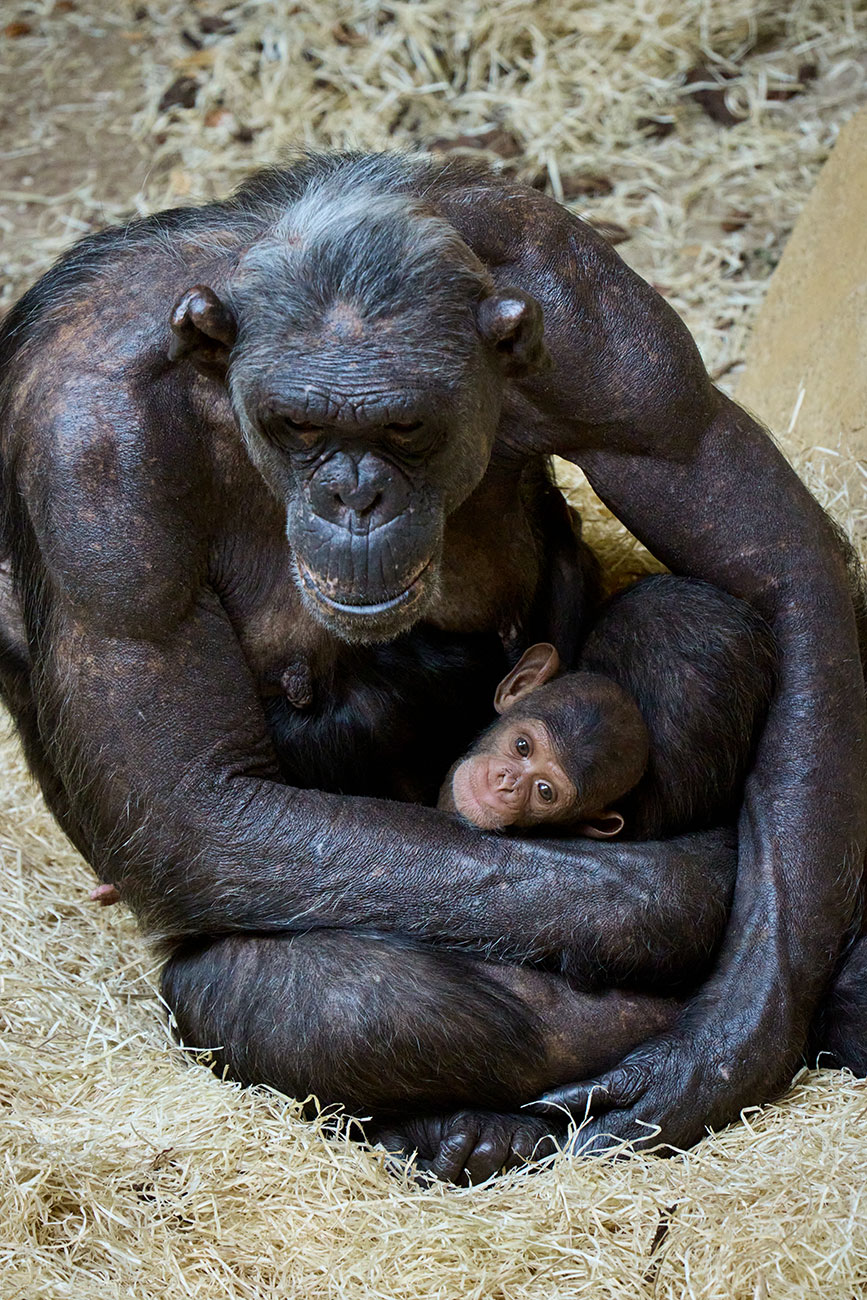
Classified as Endangered on the IUCN Red List, the Central African chimpanzee is one of the four subspecies currently identified. Most of the populations live outside protected areas and are therefore subject to numerous human pressures. Poaching for their meat in certain regions or illegal captures of young chimpanzees to fuel the wildlife trade constitute the most serious threats to chimpanzees today, just ahead of habitat destruction.
This birth therefore demonstrates the key role played by zoos in preserving the most endangered species. Palmyre Conservation is also actively involved in the protection of chimpanzees in Africa by supporting the work of the sanctuary J.A.C.K. in the DRC.